How to generate organic traffic on your website, without having a brilliant post
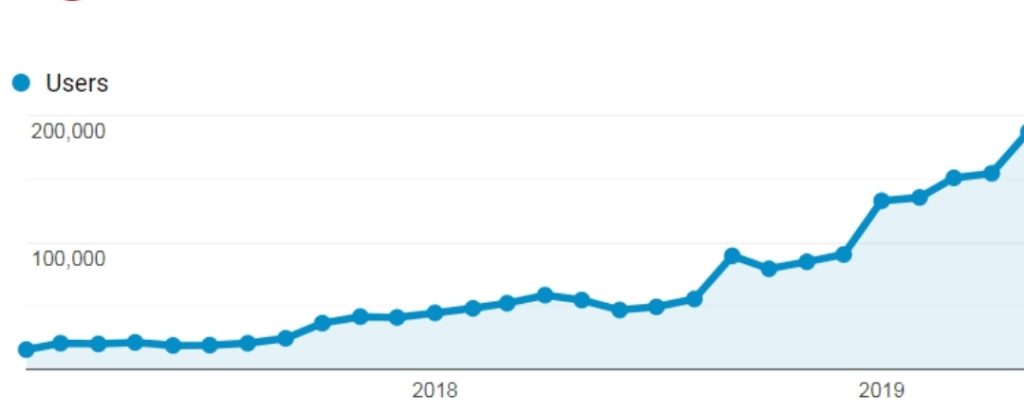
In today’s time of Google combat the biggest challenge that SEO professionals face is to find out unique ideas on daily basis which could boost traffic on their sites still keeping the boundaries of their site topic.
But the classic approach of researching new keywords then writing articles for those that match your domain strength doesn’t work for all sites.
Take Quora, for example. It’s one of the largest social platforms, with over 300 million monthly active users and nearly 54 million pages in Google’s index. Even with a team of writers, you couldn’t create enough high-quality content to yield big results.
Instead, you have to identify scalable solutions that drive organic traffic—new information types or page templates. In other words, new features!
Quora did just that. In mid-2019, they launched a new feature called “spaces,” which allows users to create content around topics instead of questions. Topics are an important feature for social networks, just as genres are for music or categories for ecommerce sites. (Twitter recently introduced topics, too.)
Quora Spaces is already gaining traction in organic search. It’s a great example of how product features can drive organic traffic. In fact, new product features are the most underrated driver of SEO growth for large sites.
In this article, I show you:
- How user intent can help you brainstorm product features;
- The step-by-step process to narrow your list of potential features;
- Keys to deploying those new features in an SEO-friendly way.
Why opportunities are different for “inventory-driven” websites
SEO growth works differently for sites that scale with content (e.g., blog posts) compared to sites that scale with inventory (e.g., movies, songs, products, profiles, etc.). I call the later type “inventory driven.”
As such, SEO opportunities for sites that scale with content (“content driven”) are mostly new topics and keywords to feed article creation, whereas inventory-driven sites scale with new product features.
For inventory-driven sites, the website is a big part of the product. It’s more than just a distribution channel. It provides the platform that users act on and a solution to one or many problems.
For a feature to have SEO value, of course, it has to be publicly exposed. Anything behind a login or on a native app doesn’t work. The feature also has to address a need that people are searching for.
Whether it improves the quality of an existing page (and, therefore, rankings for keywords you’re already addressing) or justifies new page creation (to rank for new keywords), there has to be demand.
Let’s look at a few examples of SEO-focused product features:
- Quora spaces;
- Youtube hashtags;
- Twitter moments;
- Pinterest topics;
- Owler’s competitive analysis of Twitter followers;
- Crunchbase showing SimilarWeb data;
- Amazon Q&A;
- Trello templates;
- Databox templates.
Those features are helping sites ranking for thousands, even millions, of keywords.
Quora Spaces
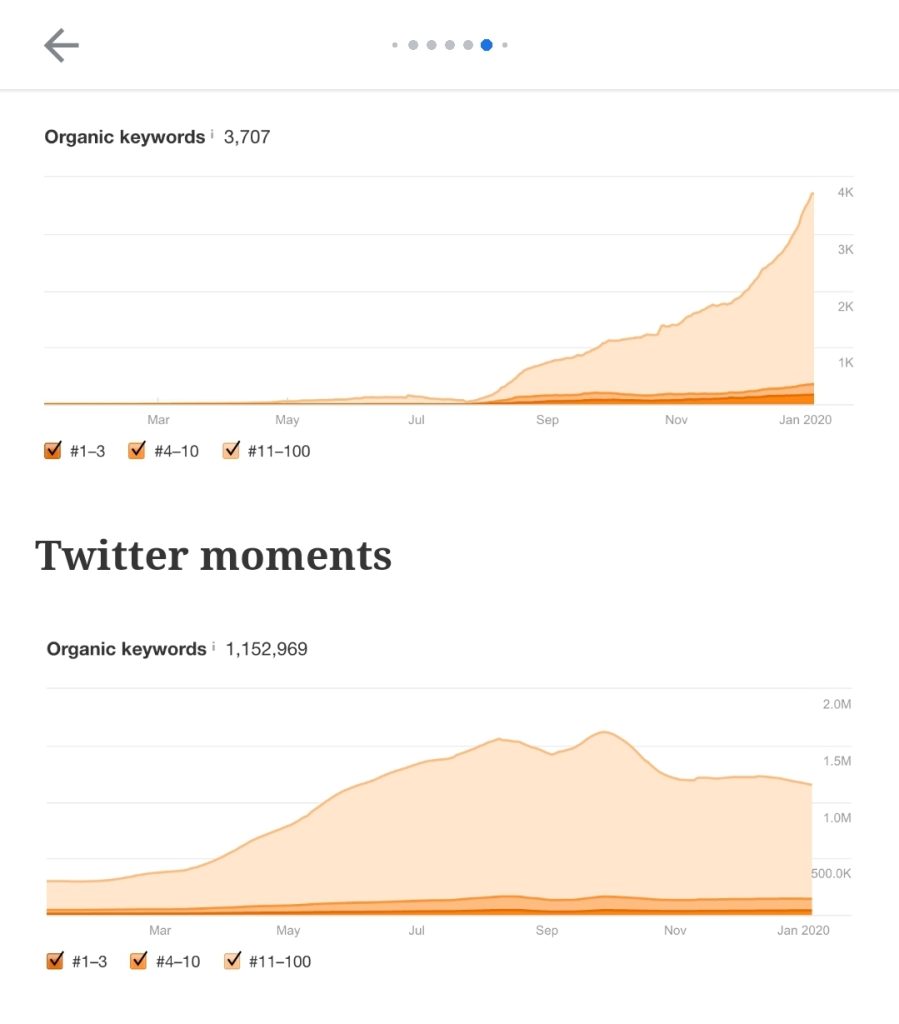
Twitter moments
In each case, an extension to the existing solution was shipped in a search engine–friendly way and now drives a lot of organic traffic, while also improving the product.
Look at Amazon. They rolled out an indexable Q&A for obvious reasons—users have all sorts of product questions.
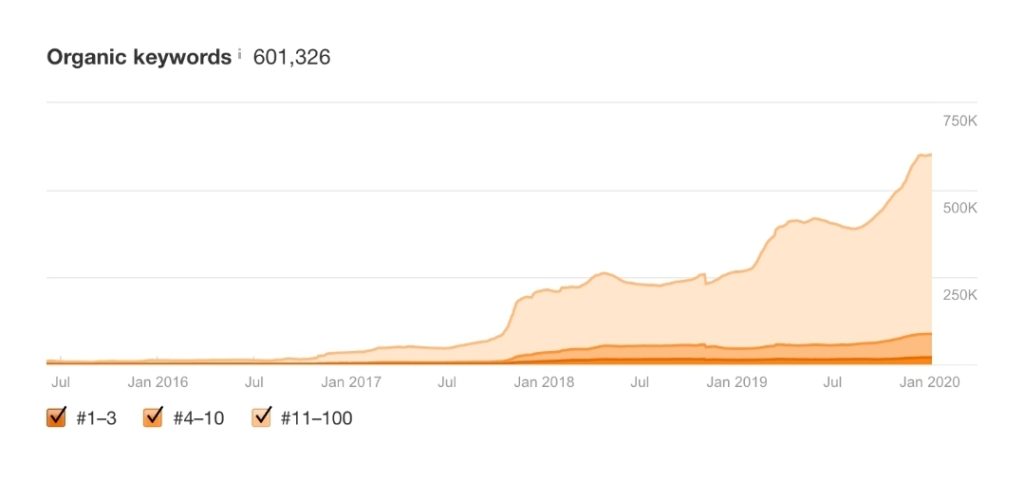
Adding Q&A pages not only makes visiting Amazon more attractive (because you get answers to your questions), but it also addresses questions people might type into Google search. In return, customers might first get to Amazon through an off-site search, then buy the product there.
But what if the high-potential feature isn’t obvious? How do you make new feature ideas something other than speculative?
User intent + Jobs-to-be-done = a match made in heaven
New product features are built with a variety of methods:
- Gut feeling (e.g., Steve Jobs);
- Brainstorming/hive mind;
- Quantitative research (i.e. what customers are doing);
- Qualitative research (i.e. speaking to customers);
- Customer requests;
- Strategically, to attack a market.
No conversation in SEO can exclude user intent. If you don’t meet user intent, you won’t rank. That makes it more of a ranking enabler than a ranking factor—even more so since machine-learning technologies like BERT help Google understand intent better.
The Jobs-to-be-done framework (JTBD) was invented by economist Clayton Christensen and is a great way to identify user intent for a topic and define the right features. A “job,” in this case, is a micro task that’s connected to context—the circumstances in which the user is trying to get a job done. The main goal is to have a list of jobs for which you can build new features.
JTBD follows 5 steps:
- Identify the focus market;
- Find core and side jobs customers try to get done;
- Categorize the jobs;
- Create job statements;
- Prioritize opportunities depending on how well they’re served at the moment (over-served, served right, underserved).
For many inventory-driven sites, the JTBD framework is a better alternative to personas. It’s difficult to target personas when you may have hundreds of sub-audiences. Instead, looking at the jobs your audiences are trying to do—and in what context—is more fruitful. Jobs are agnostic to personality or preferences.
Let’s run through a hypothetical example with Spotify.
- We can flip “focus market” to “target topic”—the topical space in which your product provides value. For Spotify, the target topic would be “music” because it’s core to Spotify’s product.
- Define jobs: “listen to music,” “share music with friends,” “explore new genres,” etc. (There are probably hundreds or thousands of jobs.) Simply describe interactions your target audience has with your product.
- Cluster your jobs into groups like “listen,” “share,” or “explore.” Think about the action that users take.
- Write job statements consisting of an object, a verb, and context. For example, “listen to music on a plane”; “share music with friends while texting on WhatsApp”; or “explore new genres when I’m bored at work” (which never happens, of course).
- Prioritize the jobs according to your core product value—the main thing users get out of your solution. This is when you look at the importance of each job for your business and categorize them as “main jobs” or “side jobs,” depending on how important they are for the customer.
The final outcome is a prioritized list of important problems your audience is trying to solve.
For Spotify, the new feature could be a set of pages for the most shared songs in every genre or weekly charts per genre. They already scale SEO with artist, album, and genre pages. To take it even further, they could get into the lyrics game and publish lyrics on song pages (just an idea).

Don’t neglect the emotional context
The emotional part of a job, provided through its context, is crucial. Remember, we almost always make emotional, not rational, choices. Even Google recommends looking at the emotional contexts in which users search, defining them as “needs.”
They’ve identified six needs:
- Surprise me;
- Thrill me;
- Impress me;
- Educate me;
- Reassure me;
- Help me.
To merge this emotional context with the JTBD framework, use needs as filters. Each job should satisfy at least one need.
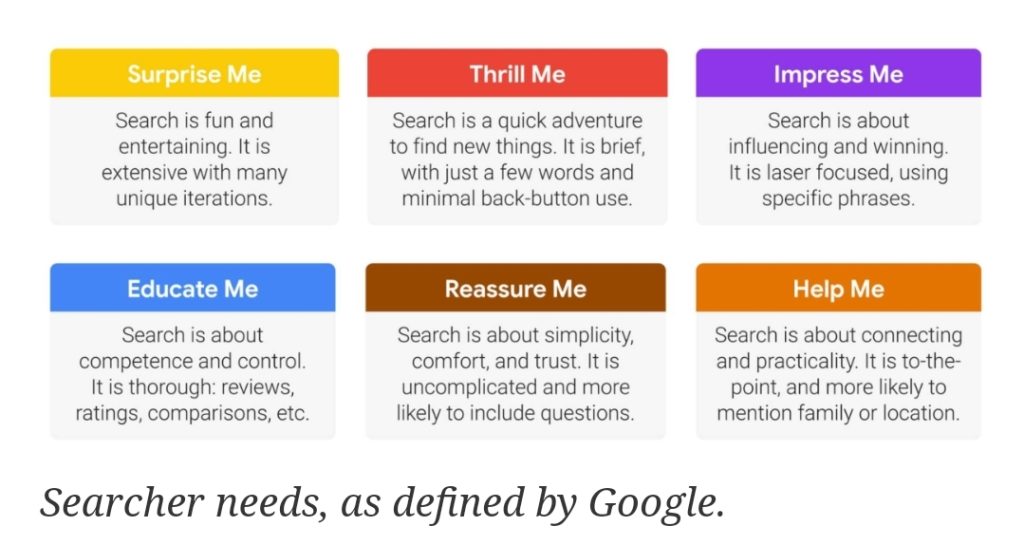
Empathy is central to getting user intent right. As Google states:
Each need state is made up of a combination of emotional, social, and functional needs. Emotions are the foundations of need states. The truth is, decision-making is not a rational process, but one driven mainly by how people feel. The rational brain layers on reasons for our choices only after they’re made.
So far, we’ve gone through half the process:
- Use the JTBD framework to identify user problems.
- Cross check jobs with emotional needs.
Now, it’s time for the remaining steps:
- Feed job ideas with SEO data, like search volume.
- Deploy the feature in an SEO-friendly way.
5 ways to pair jobs with SEO research
People search with queries. Whereas classic SEO opportunity analysis focuses on finding new keywords, features should focus on patterns—queries with a common syntax.
Syntax describes the word order or arrangement. Query syntax, therefore, means how query patterns are structured. When you find queries with the same syntax that you don’t rank for, you can build a new feature to address them.
The point is not to find a few queries with high search volume. It’s to find a query pattern or template that scales across thousands of searches, which—in sum—add up to a lot of traffic.
Let’s consider some examples:
- Imagine YouTube users were searching for “[title of video] English subtitles” on Google. This would indicate that users want to see English subtitles for videos. YouTube could build a feature to show English subtitles automatically. To make it search-friendly, the transcription could be added on the page and provide additional content for Google.
- Say you find that queries with the pattern “investors of [company]” have a lot of search volume. That would indicate to a site like Crunchbase that they might want to build a feature to let users see the investors of any company (if the information is available) on the company page.
- A query syntax like “[business type] reporting template” would indicate to a company like Google that they should build standardized, industry-specific templates for Google Data Studio.
In each case, the identified demand can be addressed and lead to more organic traffic (and, of course, happier customers). You simply tweak standard keyword research methods to unearth queries with a shared syntax.
Here are five ways to do it.
How to discover queries with a shared syntax
1. Competitor analysis
Use a feature like Ahrefs’ “Content Gap” or SEMrush’s “Keyword Gap” to discover keywords that your competitors rank for but you do not.
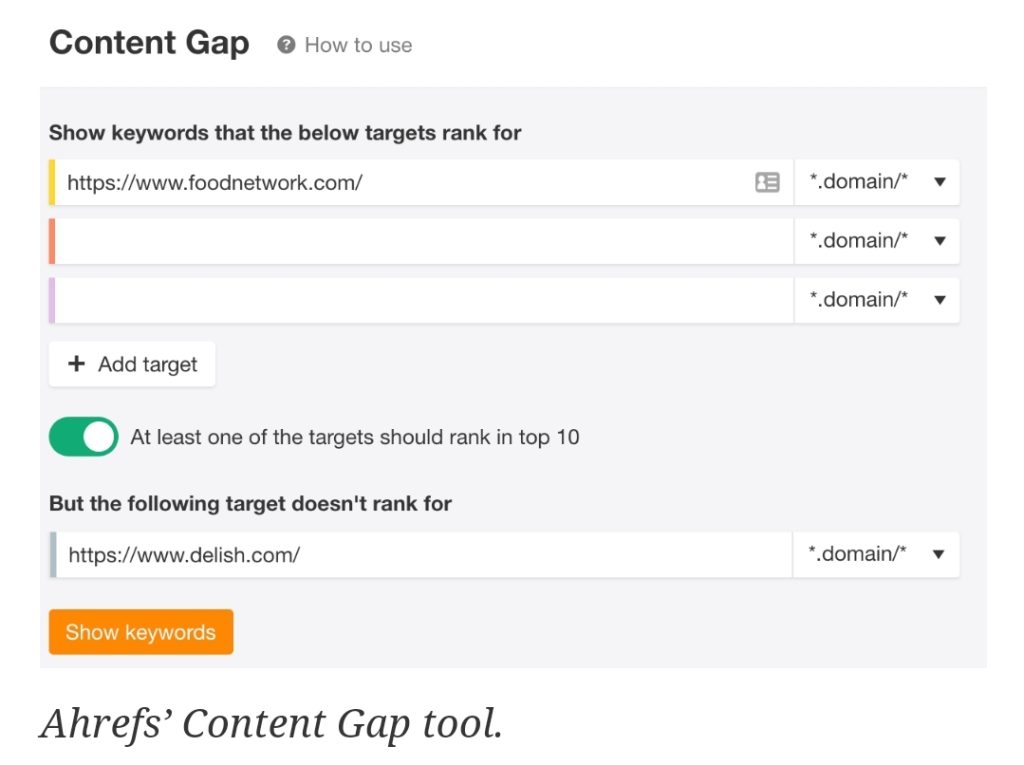
You want to identify query patterns just like you would look for new keyword opportunities, but at scale and with the same syntax. The easiest way to find new opportunities is among long-tail keywords, so set “Word count” to a minimum of 3 words.
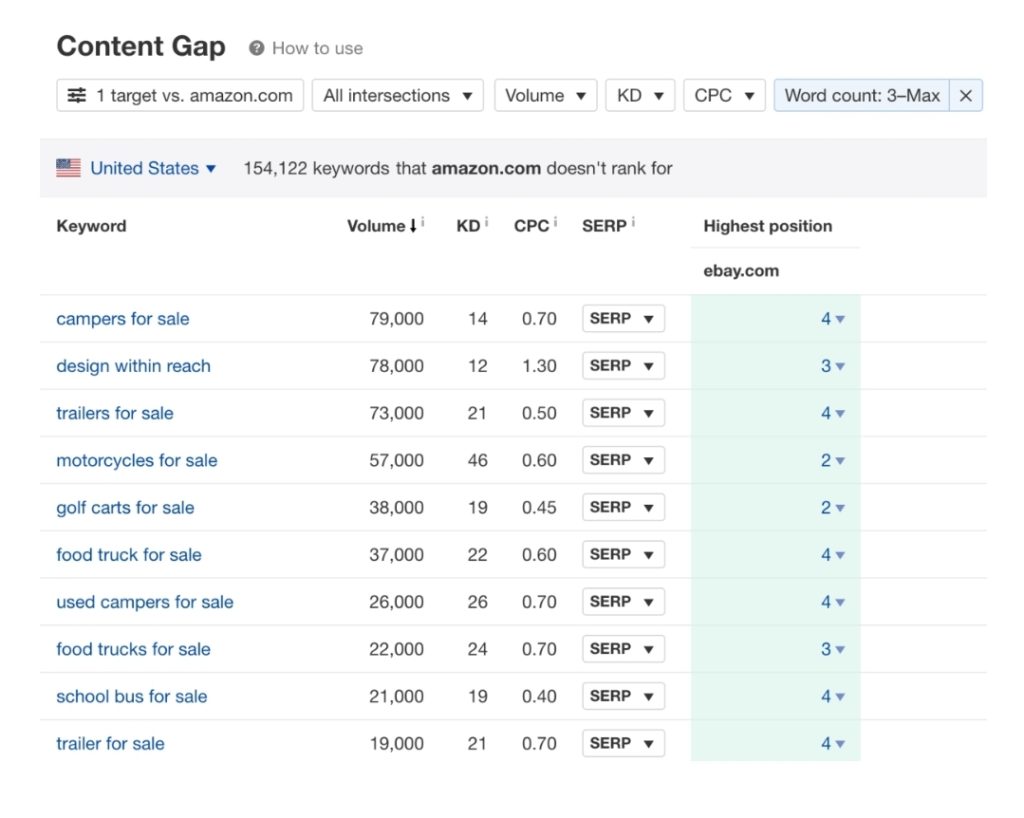
The example above compares eBay’s keywords to Amazon’s, with a minimum word count of 3. It quickly shows that “[item] for sale” is a query syntax eBay ranks well for but Amazon doesn’t.
As a result, a (theoretical) opportunity for Amazon would be to add a feature that lists item categories “for sale” on its marketplace.
2. Hidden gems
Sometimes, established sites rank for queries with a certain syntax—but not high enough on the SERP to earn many clicks.
Depending how well existing pages meet user intent for those queries, you could improve existing content or create new pages. Taking what you have to the next level is a viable strategy and often more resource-friendly than building new things.
You can find them with rank tracker tools. In Ahrefs, filter your domain’s keywords for a higher word count and lower position:
- Plug your domain into the search field.
- Go to the “organic keywords” report.
- Filter for lower positions (e.g., 20–40).
- Filter for a higher word count (e.g., 5+).
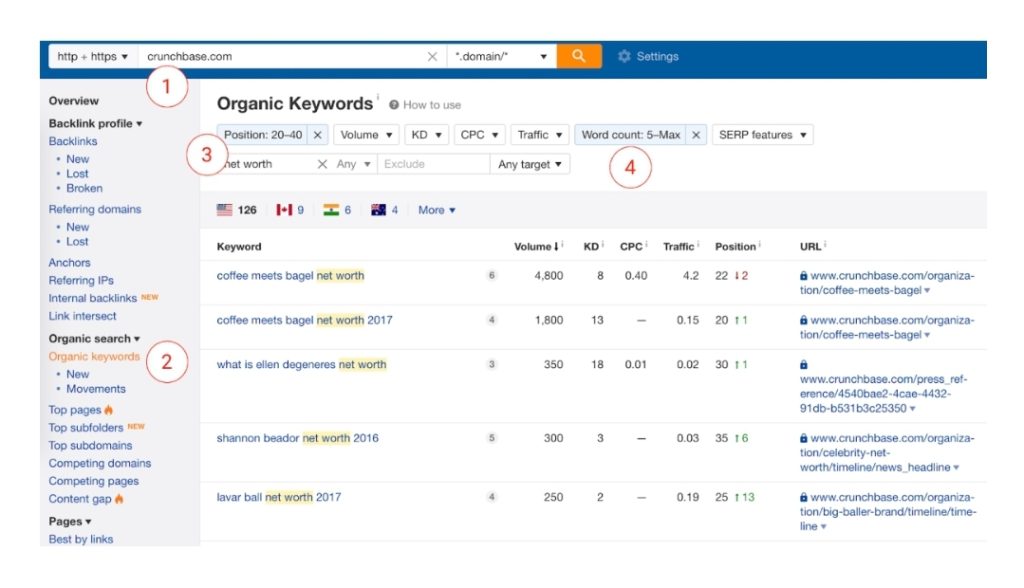
In the case above, I used Ahrefs to find a new (hypothetical) feature opportunity for Crunchbase: the net worth of companies and people.
From here, use your eye to spot patterns, or export the query list to a spreadsheet and categorize each of them until you start to see the pattern. Also, play around with the filtering options. Some sites need a higher word count, others start showing patterns with fewer words.
3. Internal search
Looking at internal search keywords in tools like Google Analytics, Algolia, or Looker has many benefits. One of them is understanding features that users are looking for, or informational needs that you could turn into a feature.
To find internal search data in Google Analytics, go to:
- Behavior;
- Site Search;
- Search Terms;
- Look at the “Search Term” column.

As with previous keyword research methods, the goal is to look for queries with the same syntax and identify patterns. (Text analyzer tools like this one can help scale the process.)
4. Use tools to discover new topics
Certain tools, such as Exploding Topics, Ahrefs’ Content Explorer, Google Trends, Alexa Content Exploration, or Buzzsumo can help you discover topics gaining traction on the web.

Those topics can be translated into new features, but you have to start with a “seed idea”—a hunch (based on your JTBD research) for what users might want that relates to your product.
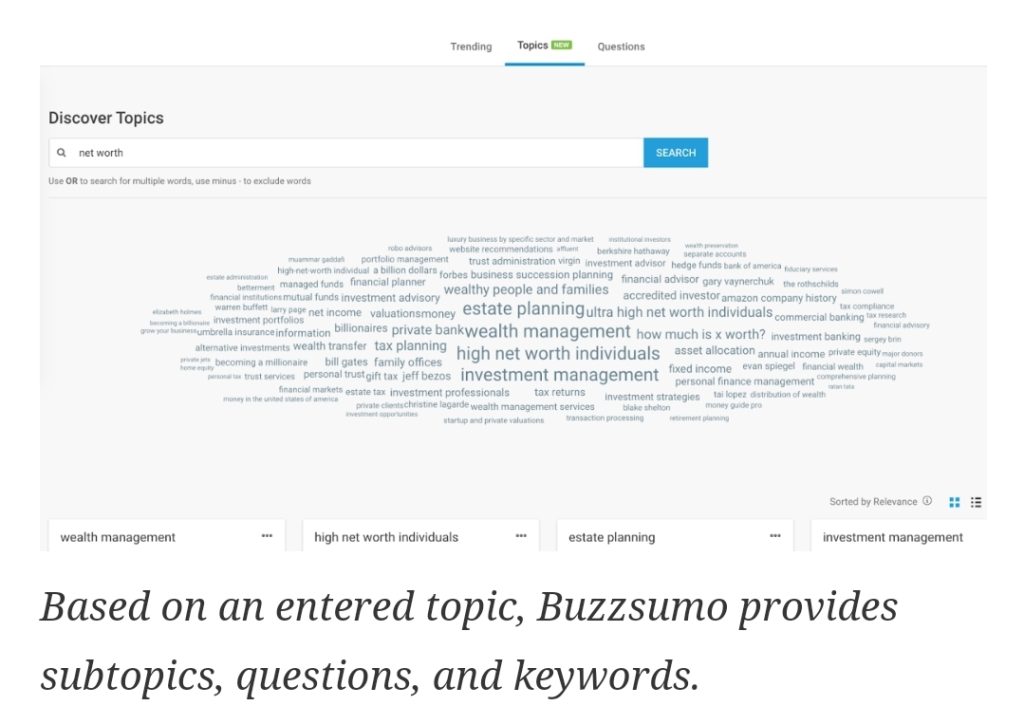
These tools can validate your ideas and explore the topic further. Find the problems and needs of your audience and translate them into new features.
5. Ask your customers
One of the best ways to inform new features is to ask your target group directly! If you can’t invite people into your office and squeeze a new feature out of them, you have two options: Use social networks or a user-testing platform.
Simply asking “What feature should we build?” on Twitter or Facebook can lead to interesting conversations. You can also mine or monitor mentions on social networks and look for complaints or requests for features. The same goes for customer support: What features are customers regularly complaining about or requesting?
Sometimes, however, you need more, like what you get from remote user-testing. Platforms like Userlytics, UserTesting, or Lookback allow you to record or survey users and find out what functionality they’re missing.
How to make new product features SEO friendly
Now that you’ve identified a job and associated query syntax, the question is whether you can (or should) build a new page template or add to existing pages. The answer is given by user intent:
- If your existing pages already target a clear intent, and the new feature would dilute it, create a new page for it.
- If the new feature is additive or complementary, integrate it on existing pages.
There is no cookie-cutter answer that’s true in every case, so use your best judgment. Deploy the feature at a small scale to test how well it works for users and whether the new feature helps you rank for a query pattern you already rank for or a new one.
At G2, for example, we learned that a query syntax like “free [software name]” can’t be solved with a filter on a category page. To be search-friendly and provide the best answer, it needs a new page template. Users don’t want to come to a page and click on a filter to see free software; they want access only to free solutions when they search for them.
When creating new pages or updating existing ones, here are things to keep in mind.
Keys to adding SEO-friendly features
SEO-friendly features mostly come down to providing information, creating page types, integrating UGC, and providing templates on product or category pages. When you develop and ship them, you have to keep three factors in mind to get the most organic traffic out of them.
1. Accessibility
First, they have to be publicly accessible for users and search engines. That means search engines need to be able to render any scripts or frameworks they’re built with and parse the content.
A big part of that is speed and mobile friendliness. Test new features with Google’s rendering tool in Search Console, PageSpeed Insights, and their Mobile-Friendly Test:
Google Search Console
- Go to URL Inspection;
- Insert URL into the search field;
- Click “Live Test”;
- Click “Screenshot”;
- Make sure the URL has no problems.
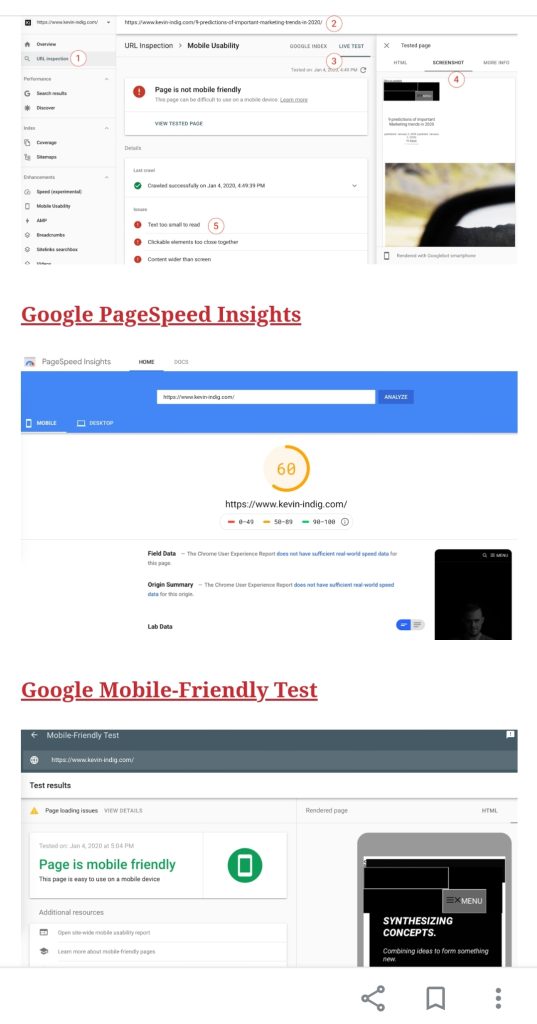
2. Discoverability
Second, these pages need to be discoverable for search engines, which comes down to internal links and XML sitemaps.
Make sure new pages are not orphaned or anchored too low in crawl depth. Crawl your site on a staging environment with freshly deployed features and compare metrics like crawl depth and internal links to similar pages on the live version of your site.

Rolling out a few thousand pages at once without linking to them properly can do more than just lower the success of a new feature—it can lead to crawl budget problems as well.
One way to avoid this issue is to add a homepage module that links to hub pages (often category pages) on which the new feature pages are linked. Also ensure that you link between new feature pages to make it easy for:
- Google to understand their relationship;
- Users to navigate between them;
- Link equity to pass across the new page template.
3. Relevance
Third, features need to address a new user intent or job-to-be-done (i.e. provide value). Examine the queries you’re targeting with the new feature and make sure the information and value you provide are sufficient for users to get something out of it. Optimizing for search without optimizing for your users, brand, etc., has no future.
In addition to monitoring rankings for targeted query patterns, look at user satisfaction metrics, which depend on the original intent of the query. In most cases, it’s either time on page, scroll depth, or a triggered click event. I recommend a mix of all three, if possible.
Making a case for new product features
Unless you’re a small, agile startup, shipping new features isn’t as simple as it sounds. You’ll likely have to make a case to get developer and designer resources and bring your asks into the right formats for product teams to push them forward.
Three things will help you with your pitch.
1. Know the process
If you’ve never heard the term scrum or agile before, you’re behind. New features need to be written in user stories to fit the scrum framework.
The pattern follows, “As a user, I would like to…” and describes the final outcome for users. Then, developers can create tickets for each piece that leads to the outcome.
Also note that developers work in sprints, usually over two weeks, with a planning and retro session. If you can, be present in both to assess whether the feature is getting built the way you envision.
2. Define value
Product leaders often want to see an estimate of returns. Resources are scarce and need to be prioritized according to potential impact. In plain words, asking a team to build something “just because” isn’t enough. You need to bring numbers.
Luckily, it should be relatively simple to estimate traffic from the queries you identified during query syntax research. Your job is to connect the potential traffic to a number that reflects business impact—dollars, ideally.
3. Start small
Launch Minimum Viable Products (MVPs) when you can. Either roll out a new feature on a subset of pages or with limited functionality. MVPs allow you to prove impact quickly, get more resources, and back up your roadmap.
Make sure you benchmark performance before you launch an MVP feature. Have a plan for measuring success and document your findings.
Conclusion
SEOs are often handed lofty goals and work under high pressure. They need to prioritize their efforts in a way that shows results; otherwise, they risk losing credibility and resources.
Companies that scale organic traffic with their inventory rarely need backlinks. More often, they need technical SEO. However, even the best technical SEO reaches a point when 90% of opportunities are maxed out, and growth slows. In this case, new product features in the form of new page templates or information types are key.
If successful, feature-driven SEO opportunities can help a company expand vertically, by targeting more verticals, or horizontally, by offering new services. SEO is a pull channel, and search volume is indicative of demand.
The biggest challenge is to get the necessary funding to go after such opportunities, and the way to overcome it is to make a strong, data-driven case.



